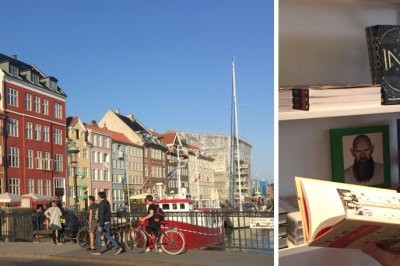REBECCA’S 5 LESSONS FROM COPENHAGEN

Nest’s Founder and Executive Director, Rebecca, just returned from Copenhagen for a week of industry meetings and discussions centering around the Copenhagen Fashion Summit on sustainability. After chronicling her Copenhagen diary on the Nest Instagram, she is sharing with us her top 5 lessons about the future of fashion sustainability. Get ready to take notes!
- INNOVATION AND NEW ARE NOT THE SAME – Bandana Tewari of Vogue India spoke this one perfectly. Innovation is not always about creating something new. Sometimes, a better approach is to focus on introducing new ideas to old ways of doing things. Handmade production was the original luxury – value was derived from the painstaking effort that went into hand loomed, beaded and embroidered garments (among other heritage techniques). Let’s return to those ideals and refresh these time-honored processes with design innovation, improved environmental consciousness and cross-cultural collaboration.
- WE CANNOT LEAVE OUT HUMANS! Many Summit discussions shed light on the commendable efforts brands are making to improve the environmental sustainability of their products. This is wonderful. Nest remains committed to ensuring that we give this same attention to the humans who are part these same supply chains! The social plight of artisans and homeworkers in particular, a labor force numbering in the tens of millions of people outside factories, cannot be ignored. Nest’s Universal Homeworker Standards Project, I hope, is a big first step to changing this.
- IT’S ALL ABOUT FOLLOW-THROUGH. The movement towards increased sustainability in the fashion industry is still in its very early stages. We must give our new solutions time for thoughtful implementation and measurement of impact to see what is working and what is not. We need to ensure commitment remains steady (from brands, from philanthropists, from consumers) as change is never immediate. As tempting as it can be, we must not be lured from shiny new solution to shiny new solution – we must remain steadfast in our commitment to learn from and to optimize existing solutions that address critical needs.
- COLLABORATION IS KEY. The Summit perfectly exemplified the paramount value and importance of convening the industry to build a unified movement towards sustainability – we cannot do this work alone! The industry needs to unite around central efforts to create impact on the global scale. In doing so, we will benefit from shared resources and knowledge while avoiding duplicative efforts that inhibit progress.
- WHO ARE ARTISANS? From my personal meetings and conversations, a central perception problem we encounter at Nest was made ever salient – many brands are wondering: “who are artisans?” As much as 60% of garment production is being done in homes, often by hand or with limited support from a sewing machine. While many brands think of this workforce simply as “homeworkers”, Nest considers them artisans. Artisan is not niche – it is a global $34 B powerhouse and the 2nd largest employer of women in developing economies. I emerged from the Summit more committed then ever to ensuring Nest’s role in setting this misperception straight. We’ll need the help of our entire community to make it possible.
Tags: Artisans, Copenhagen Fashion Summit, Homeworker Standards, Sustainability